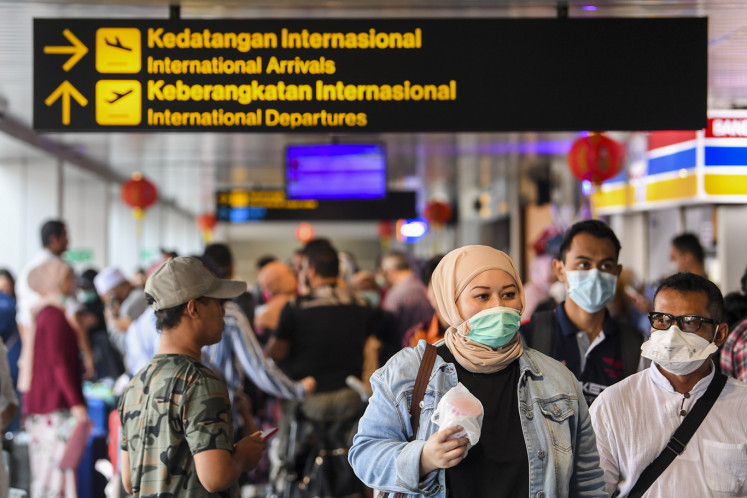Popular Reads
Top Results
Can't find what you're looking for?
View all search resultsPopular Reads
Top Results
Can't find what you're looking for?
View all search resultsPreparing Indonesian banking sector to be resilient in 2023
Change text size
Gift Premium Articles
to Anyone
 Innovation: Bank Mandiri president director Darmawan Junaidi (left) and deputy president director Alexandra Askandar (right) attend the opening ceremony of Smart Branch by Mandiri. The newly revamped program offers digital customer-centric features connected to Bank Mandiri’s Livin’ digital channel.
Innovation: Bank Mandiri president director Darmawan Junaidi (left) and deputy president director Alexandra Askandar (right) attend the opening ceremony of Smart Branch by Mandiri. The newly revamped program offers digital customer-centric features connected to Bank Mandiri’s Livin’ digital channel.
T
he Indonesian economy in 2022 recovered from the COVID-19 pandemic and accelerated significantly amid a global economic slowdown and increasing uncertainty.
Indonesia’s strengthening economy was reflected in all components of GDP: export performance, which increased by 21.64 percent year-on-year (yoy), and higher consumer spending by 5.39 percent yoy. From the sectoral perspective, in the first nine months, the highest growth was recorded by the transportation sector at 20.97 percent yoy, followed by food and beverages at 11.29 percent yoy, services at 8.21 percent yoy and utilities at 8.14 percent yoy.
Aligned with the accelerations above, banking intermediation also improved, with a growth of 11.16 percent yoy in November, higher than the previous year at 4.73 percent yoy. The acceleration in lending was supported mostly by the micro, small and medium enterprises (MSME) segment, which grew by 16.8 percent yoy in August, notably faster than the 9.3 percent yoy growth in August 2021. MSMEs accounted for 21 percent of total lending. Rising business activity also led to an increase in working capital disbursement by 11.6 percent yoy, mainly through investment in the processing industry.
Meanwhile consumer credit also grew by 9 percent yoy as consumer purchasing power recovered, which led to a higher disbursement of home loans, vehicle loans and multipurpose loans. This is in line with rising consumer confidence in the current economic conditions and expectations for the economy going forward.
The high loan growth was accompanied by softer growth in third-party funding, which grew by 8.8 percent yoy in November. The growth was lower than the growth in the previous year at 10.37 percent.
The softer third-party funding growth signals that business players and investors are starting to channel their funds into economic activities. This was further reflected in the notable increase in demand deposits while savings and time deposit growth was relatively softer. Demand deposit grew by 17.4 percent yoy in August, which was higher than the 13.4 percent yoy in August 2021.
The substantially higher loan demand led to tighter liquidity in 2022, as shown by the loan-to-deposit ratio (LDR) of 79.6 percent in November 2022. Tighter liquidity was also reflected in the liquid-asset-to-non-core-deposit ratio (AL/NCD), which reached 134.97 percent in November, lower than the 154.9 percent in November 2021.















